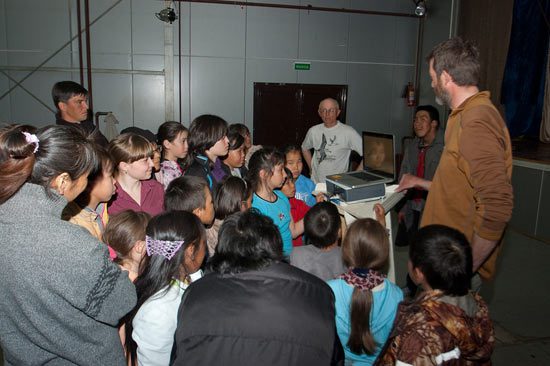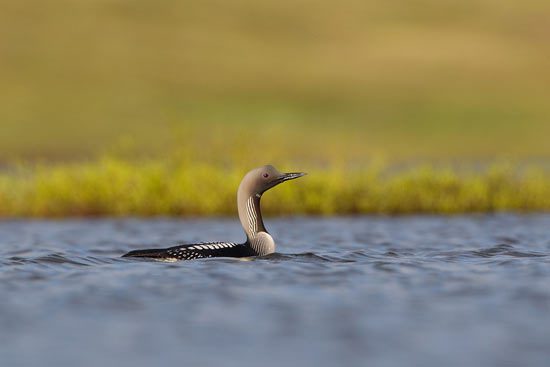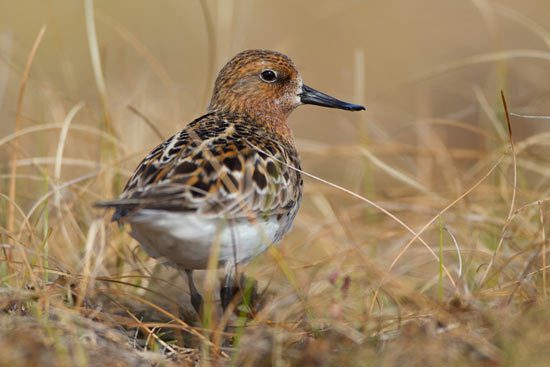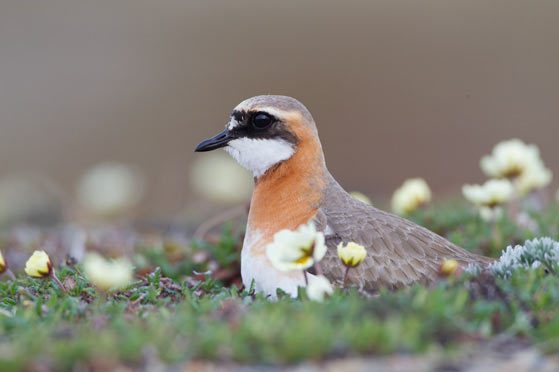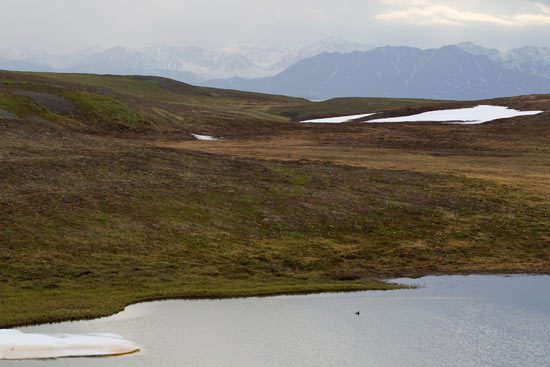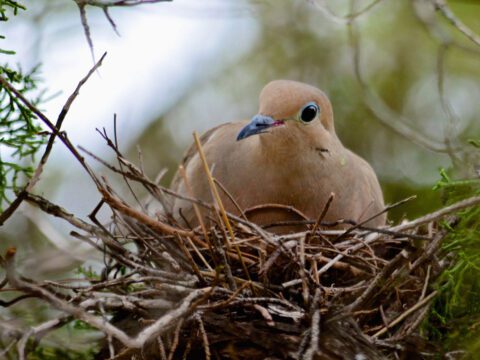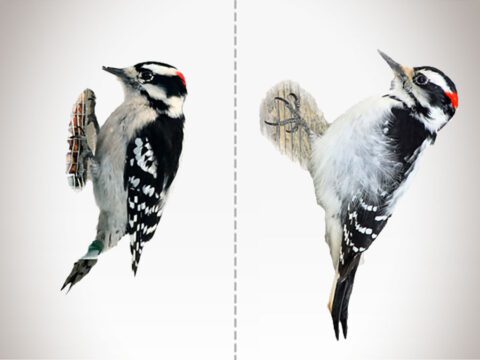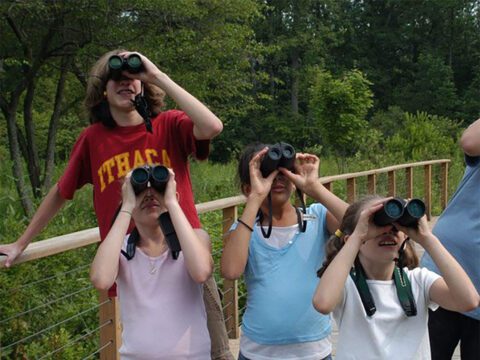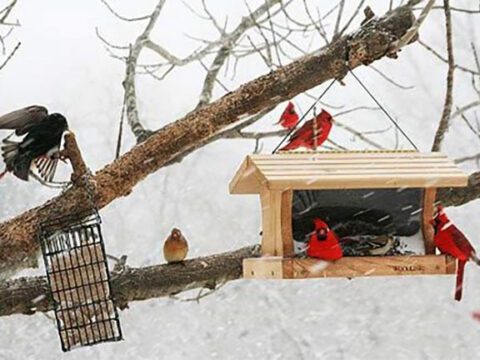Courtship on the Tundra—Spoon-billed Sandpipers [Field Report]
Images and text by Gerrit Vyn, Cornell Lab producer July 8, 2011
Gerrit Vyn (at right) shows local community the first HD footage of a calling male Spoon-billed Sandpiper. 
Recently, Gerrit found a pair of shy Arctic Loons nesting on a distant lake. 
A Spoon-billed Sandpiper pauses while foraging among arctic sedges. 
A Lesser Sand-Plover rests amid arctic wildflowers. 
Spoon-billed Sandpipers nest among low moraine hills like these.
Tonight the winds were calm and the sun was shining for the first time in a week. The tundra, which was brown when we arrived, has greened up. Sedges, grasses and the leaves of small willows and other plants have emerged from the crusty carpet of mosses and lichens. In most places the ground is covered with the small dancing heads of arctic wildflowers.
So far, filming Spoon-billed Sandpipers has been difficult. Skittish, sparsely distributed birds, challenging weather, and poor light have contributed to far more filming failures than successes. But this evening was one of those that makes up for all of the long hours, frustrations and hardships you endure on a trip like this. With calm winds, gentle evening light, and a confiding pair, the conditions were ideal.
I had hiked up into the rolling moraine hills where the last snow still clung to the draws and hillsides where winter winds had left the largest deposits. Along the edges of these snowfields is often where you’ll find a Spoon-billed Sandpiper, or a pair, quietly picking up invertebrates and small seeds with their spatulate bill. So far, I’ve seen this bird use its odd bill no differently than any other small sandpiper. Perhaps its shape is useful for foraging on migration or in winter, or somewhere in its evolutionary past.
The last few weeks had been rather quiet in the moraine hills. Pairs had formed and the rhythmic calls of displaying males had given way to the quiet and secretive periods of egg laying and incubation. In total, the team found six nests in these hills and another two farther up the coast.
The first nest found was later destroyed by an unknown predator, along with the female that laid the clutch. Seeing a Spoon-billed Sandpiper lying dead on the tundra was a sobering event, a reminder of how vulnerable a small population is. At this point even random natural events—a lingering flock of migrating jaegers held back by weather conditions, a roving gull or weasel, even a stray dog—could push this population over the brink.
This evening I was hoping for one last chance to film courtship before it was over for the year. I soon located a female standing motionless on the tundra beside a snowfield, its bill tucked neatly into its russet and black scapulars. I saw the male too—a beautiful russet-headed bird intently foraging but always aware of potential predators, freezing momentarily and cocking its head skyward whenever a gull would pass in flight. The two were clearly bonded. The male kept a tight watch on the female and the female followed him in her own unhurried way.
Over several hours, the pair worked their way around the edge of the snowfield and up to a knoll. As they neared the top, a different male began giving display calls in flight and landed close by. The male of the pair quickly took a position atop a tussock and began delivering steady calls. It stood tall, craning its head forward, its spooned lower mandible vibrating wildly with each trill. The intruder responded but with less vigor, and the female indicated she was committed to her selection by walking close to her male. With wings raised, tail cocked, and a burst of calls he ran toward her in a bid to copulate. She avoided his advances this time but remained close. Perhaps her body was not yet willing to expend the energy necessary to produce a second clutch.
As this was going on, yet another bird appeared. I recognized his pale, frosted plumage—he was the mate of the female that the unknown predator killed, only a few hundred meters away over the next hill. He entered the scene and gave a spirited few advertising calls before departing. For him the breeding year is over. The last unmated female had made her selection. I could only hope that things will improve for this species on their wintering grounds, and that perhaps next year or the year after a young female will make its way north and he’ll have the chance to try again.
As skylarks and pipits sang overhead and the pair drifted away among the tussocks I took a moment to savor what I had just seen. When you are in a place where a rare species can be readily found, it’s easy to lose sight of the fact that you are in one of very few places on earth where that can be done. I had just spent an intimate couple of hours in the middle of nowhere, Chukotka, Russia, with four of the remaining 400 or so Spoon-billed Sandpipers on the planet. I felt very lucky to have had the experience at all, not to mention capture it in pictures, video, and sound. I’m looking forward to bringing a piece of the experience back to the Lab to share with all of you.

All About Birds
is a free resource
Available for everyone,
funded by donors like you
American Kestrel by Blair Dudeck / Macaulay Library
